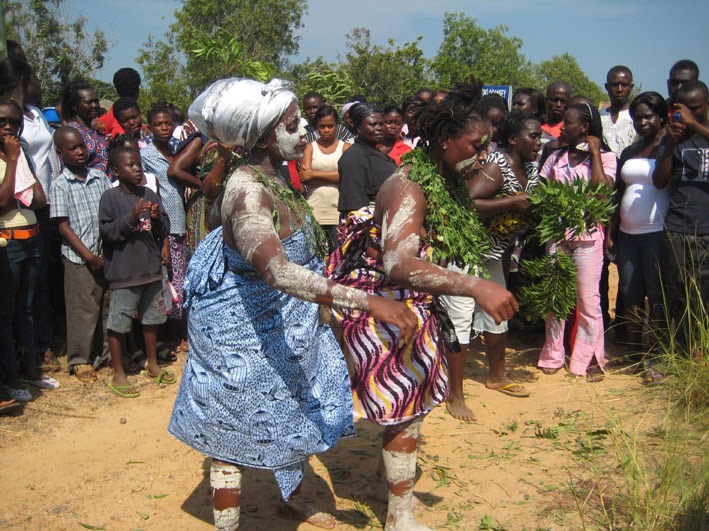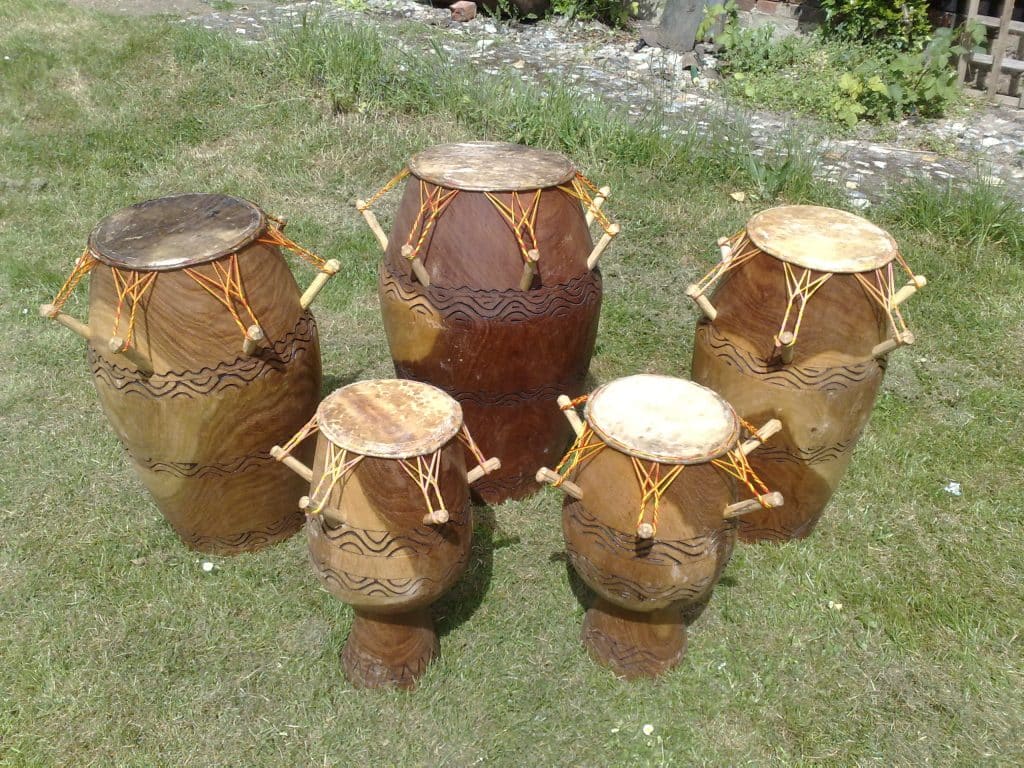In the late 1950s, around the time when Ghana gained its independence, a recreational piece called Kpanlogo emerged. Although it was initially created by young people for entertainment purposes, it incorporates musical motifs from older Ga pieces like Gome, Kolomashie, and Oge, as well as highlife.
According to Nii Taki, an elder musician from the Bukom suburb of Accra, the dance’s original name was Gbajo, which means “storytelling” in Ga. The tradition involved someone telling a story, the group making up a song about it, and then setting a dance to the song. Some of the stories used for the dances were based on the three daughters of a local chief named Kpanlogo, Alogodza, and Imama. These names can still be heard in many of the songs and dance movements associated with Kpanlogo.

Initially, many of the dance movements were considered risqué, to the point where the government almost banned Kpanlogo altogether. As a compromise, a version of the dance that allowed for more space between dancers was created, and Ghana’s first president, Kwame Nkrumah, approved of the new choreography. Since then, the dance has become immensely popular both inside and outside of Ghana.
Instruments
Kpanlogo is a form of music and dance that is constantly evolving. It is characterized by the use of several instruments, including Ngongo, Ashakashaka, Ododompo, Tamalin 1, Tamalin 2, and Kpanlogo mi.
Ngongo is a two-tone iron bell used as a timekeeper instrument, while Ashakashaka is an axatse gourd rattle also used as a timekeeper.
Ododompo, also known as castanet in English, is a finger-held instrument that produces a distinct clicking sound. Tamalin 1 and Tamalin 2 are square frame drums held in the hands and are tuned to produce different pitches. Kpanlogo mi comprises three drums: the lead drum, which is the highest tuned, support 1, which is the lowest tuned, and support 2, which is in between.

Why learn about Kpanlogo?
Learning about the dance can be an enriching and educational experience for several reasons. Firstly, it offers a glimpse into the cultural traditions of the Ga people of Ghana, from the historical background of the music and dance to the contemporary forms that have emerged over time.
Secondly, it can help people appreciate the artistic and creative aspects of Kpanlogo, from the intricate rhythms of the lead drumming to the expressive movements of the dancers.
Thirdly, the dance provides a unique opportunity to explore the intersection of music and social issues, from the ways in which the dance movements were initially perceived as risqué to the role of Kpanlogo in Ghana’s struggle for independence.
Conclusion
Kpanlogo music and dance are performed with new lead variations constantly emerging. In a performance context, groups create arrangements of movements and accompanying lead drumming, while in a traditional context, the lead drummer improvises slight variations to complement the dancers’ moves, to which the support drums respond. Generally, the music starts at a slow tempo and builds up to a faster speed. The instruments and rhythms adds to the uniqueness of this evolving music and dance form.
Source: This Music World






































